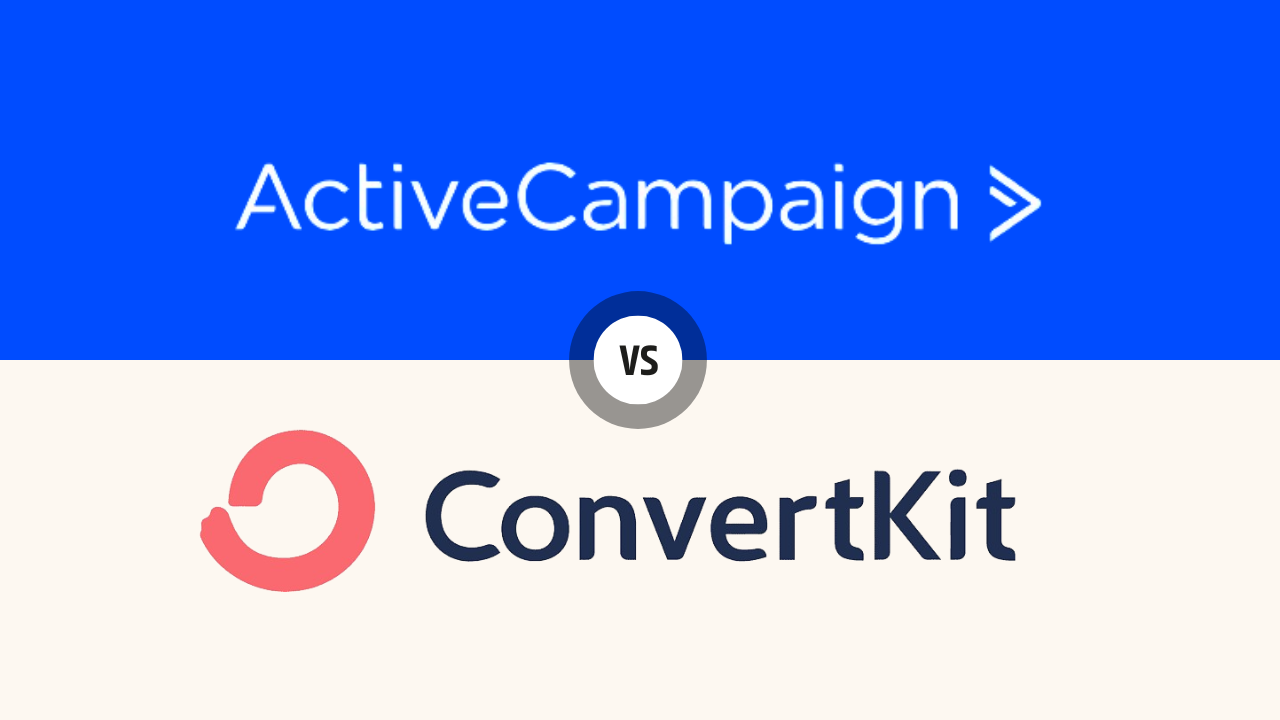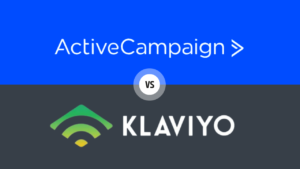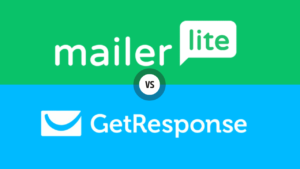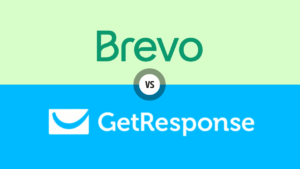Overview of ActiveCampaign vs ConvertKit
Choosing the right email marketing platform can be a difficult task, especially when deciding between two industry leaders like ActiveCampaign vs ConvertKit. Both platforms offer a wide range of features designed to enhance your email marketing efforts, but they cater to different needs and preferences. In this blog post, we’ll compare ActiveCampaign and ConvertKit across several key categories to help you determine which platform is the best fit for your business. From ease of use and pricing to automation capabilities and customer support, we’ll cover everything you need to know to make an informed decision.
Table of Contents
Ease of Use
ActiveCampaign offers a clean, intuitive interface that makes navigating through its features straightforward. The platform’s drag-and-drop email builder is user-friendly, allowing users to create professional emails without any coding skills. Additionally, the dashboard is well-organized, providing easy access to various tools and analytics. ActiveCampaign also includes helpful onboarding guides and tutorials to assist new users in getting started quickly.
ConvertKit, on the other hand, is tailored for creators and bloggers, focusing on simplicity and ease of use. The interface is minimalist and streamlined, which helps users focus on creating and managing email campaigns efficiently. ConvertKit’s visual automation builder is a standout feature, enabling users to design complex email sequences with a simple drag-and-drop interface. The platform’s straightforward design makes it accessible even for those who are new to email marketing.


When comparing ActiveCampaign vs ConvertKit in terms of ease of use, both platforms excel but serve different needs. ActiveCampaign offers a comprehensive, user-friendly interface suitable for businesses of all sizes, while ConvertKit provides a simplified, efficient experience tailored for content creators. Both platforms ensure that users can manage their email marketing tasks with ease.
Email Template Design and Customization
ActiveCampaign offers a variety of pre-designed templates that are easy to customize. Its drag-and-drop editor is user-friendly, enabling you to add and rearrange elements with ease. You can also save custom templates for future use, making it convenient to maintain a consistent brand image across campaigns. Additionally, custom HTML can be used, allowing more advanced users to create highly personalized emails.
ConvertKit focuses on simplicity and functionality in its email design tools. While it offers fewer pre-designed templates compared to ActiveCampaign, ConvertKit provides a clean, minimalist editor that allows for straightforward customization. The platform is designed to help users create simple, text-based emails that look professional and are easy to read. ConvertKit also supports custom HTML for those who want more control over their email design.


When comparing ActiveCampaign vs ConvertKit regarding email template design and customization, both platforms offer valuable tools but cater to different needs. ActiveCampaign excels with a wide range of customizable templates and a user-friendly drag-and-drop editor. ConvertKit, while offering fewer templates, focuses on simplicity and ease of use, making it ideal for quickly creating clean, professional-looking emails.
Automation Capabilities
ActiveCampaign provides an advanced automation suite that includes a visual workflow builder. Users can set up complex email sequences with multiple triggers, conditions, and actions. The platform’s automation capabilities extend beyond email marketing, integrating with CRM and sales automation tools. This allows for a seamless flow of data and actions across different parts of your business, making ActiveCampaign a robust choice for those looking to create detailed and comprehensive automation workflows.
ConvertKit also excels in automation, particularly for creators and bloggers. Its visual automation builder is intuitive and easy to use, enabling users to design complex email sequences effortlessly. ConvertKit allows for triggers based on user behavior, tags, and custom fields, making it easy to send personalized content to your audience. The platform’s focus on simplicity and effectiveness ensures that even users with minimal technical skills can set up and manage powerful automation workflows.


When comparing ActiveCampaign vs ConvertKit in terms of automation capabilities, both platforms offer comprehensive tools to support your marketing needs. ActiveCampaign provides a more advanced and detailed automation suite, while ConvertKit focuses on simplicity and effectiveness for content creators. Depending on your specific requirements, either platform can help you build effective automation workflows.
Customer Support and Resources
ActiveCampaign provides excellent customer support through multiple channels, including email, live chat, and phone support. They also offer a comprehensive knowledge base filled with articles, tutorials, and webinars to help users navigate the platform. Additionally, ActiveCampaign’s community forums are a great place to connect with other users and share insights. Their responsive support team is known for being helpful and efficient, ensuring that any issues are resolved quickly.
ConvertKit also offers solid customer support, primarily through email and live chat. The platform has an extensive help center with detailed articles and video tutorials. ConvertKit provides live workshops and training sessions to help users understand and utilize its features effectively. The ConvertKit community is active and supportive, providing an additional layer of assistance for users who need it.
When comparing ActiveCampaign vs ConvertKit in terms of customer support and resources, both platforms excel. ActiveCampaign offers more direct support options with phone support, while ConvertKit excels with a wealth of learning materials and a responsive support team. Both platforms ensure that users have the resources and support they need to succeed in their email marketing efforts.
Integration with Other Tools
ActiveCampaign boasts an extensive list of integrations, including popular CRMs like Salesforce, e-commerce platforms like Shopify, and various other marketing tools. This wide range of integrations helps users streamline their marketing processes and ensure that all their tools work together efficiently. ActiveCampaign also offers custom API integrations for more advanced users who need tailored solutions.
ConvertKit also provides numerous integrations with widely used tools. It connects seamlessly with major e-commerce platforms such as WooCommerce and BigCommerce, as well as membership sites and course platforms like Teachable and MemberPress. ConvertKit’s integrations are designed to help users expand their marketing efforts and automate various tasks, making it easier to manage campaigns across multiple channels.


When comparing ActiveCampaign vs ConvertKit in terms of integration with other tools, both platforms excel. ActiveCampaign offers a broader range of integrations, including more advanced options for custom solutions, while ConvertKit provides strong integrations that cater to most business needs. Depending on your specific integration requirements, either platform can help you achieve a connected and efficient marketing system.
Reporting and Analytics
ActiveCampaign offers detailed reporting features that allow users to track key metrics such as open rates, click-through rates, and conversion rates. The platform also provides advanced segmentation options, enabling users to analyze performance based on different audience segments. ActiveCampaign’s goal tracking and attribution reporting are particularly useful for measuring the impact of your campaigns on specific business objectives. Additionally, it integrates with Google Analytics for deeper insights into website traffic and behavior.
ConvertKit also delivers robust reporting and analytics tools. Users can access a range of reports that cover metrics like open rates, click rates, and subscriber engagement. ConvertKit’s analytics dashboard is user-friendly and provides a clear overview of your campaign performance. The platform also offers comparative reports, allowing you to see how your campaigns stack up against industry benchmarks. Furthermore, ConvertKit supports integration with third-party analytics tools to enhance its reporting capabilities.
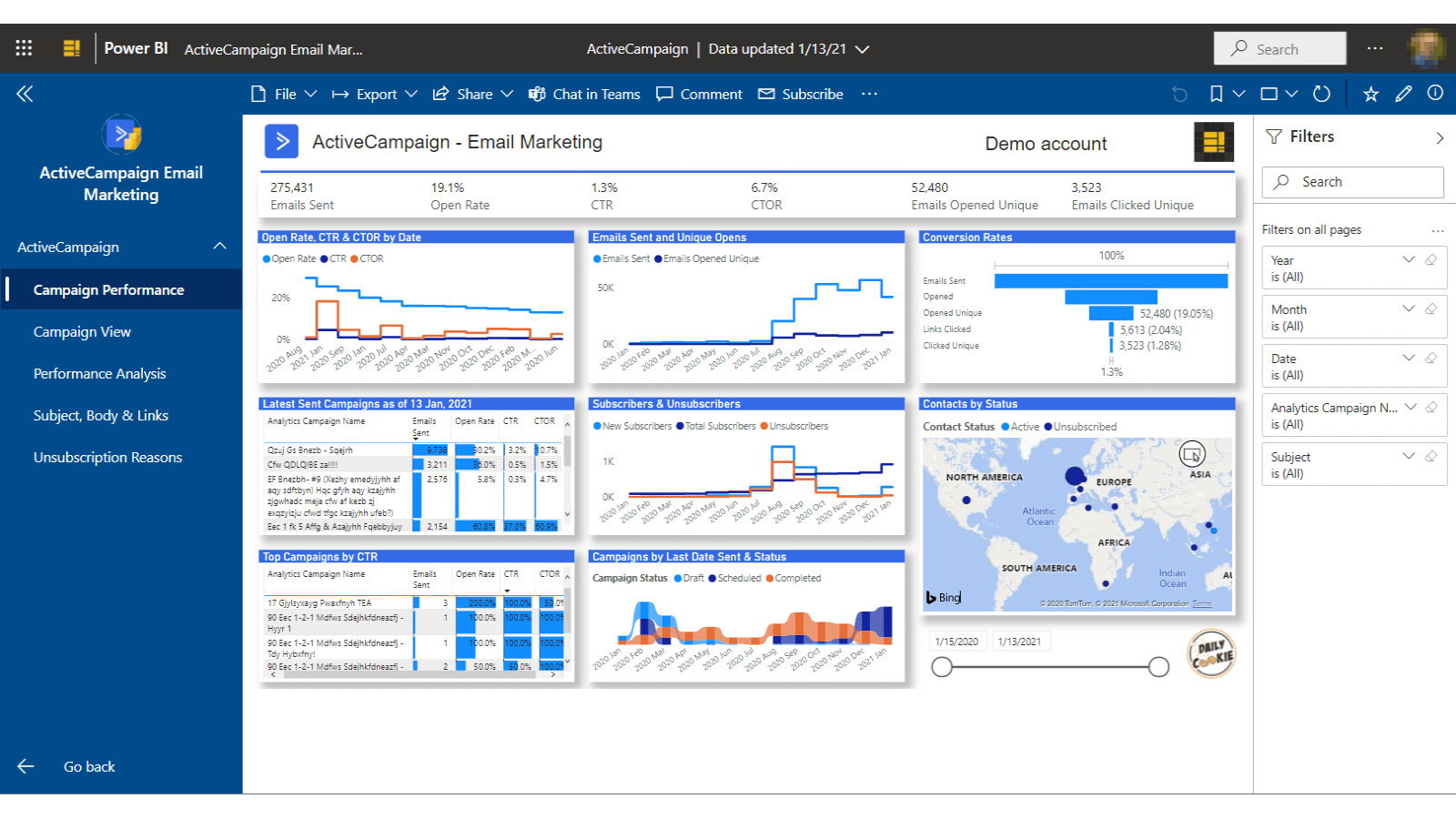

When comparing ActiveCampaign vs ConvertKit in terms of reporting and analytics, both platforms offer valuable insights. ActiveCampaign provides more advanced reporting features and in-depth analysis options, while ConvertKit excels with its straightforward, easy-to-understand reports. Depending on your need for detailed analytics or simplicity, either platform can support your email marketing strategy effectively.
Deliverability Rates
ActiveCampaign employs several strategies to maintain high deliverability rates. These include strict compliance with email regulations, robust spam filters, and an emphasis on building and maintaining a clean email list. ActiveCampaign also offers deliverability reports and monitoring tools, allowing users to keep track of their email performance and make necessary adjustments. Additionally, their deliverability team provides guidance on best practices to improve inbox placement.
ConvertKit also focuses heavily on deliverability, using advanced technology to ensure that emails are sent from reputable servers and adhere to email best practices. The platform monitors deliverability metrics and provides users with insights into their email performance. ConvertKit’s emphasis on maintaining clean subscriber lists and using double opt-in processes helps reduce the risk of spam complaints and bounce rates. The platform’s deliverability dashboard allows users to monitor and improve their deliverability.
When comparing ActiveCampaign vs ConvertKit in terms of deliverability rates, both platforms excel in ensuring high deliverability. ActiveCampaign offers comprehensive deliverability monitoring and compliance tools, while ConvertKit uses advanced technology and best practices to maintain high deliverability rates. Both platforms are committed to helping your emails reach your subscribers’ inboxes effectively.
Segmentation and Targeting Options
ActiveCampaign excels in segmentation with its advanced features. Users can create dynamic segments based on a wide range of criteria, such as user behavior, engagement levels, and demographic information. The platform allows for real-time segmentation updates, ensuring that your audience groups are always current. Additionally, the platform offers powerful targeting options through its tagging system, enabling precise and personalized email campaigns.
ConvertKit also provides strong segmentation and targeting capabilities, particularly designed for creators and bloggers. The platform uses tags and custom fields to segment subscribers, allowing users to create highly targeted email campaigns. ConvertKit’s segmentation is straightforward and intuitive, making it easy to categorize subscribers based on their interactions and preferences. The visual automation builder further enhances targeting by allowing users to set up specific triggers and actions based on subscriber behavior.
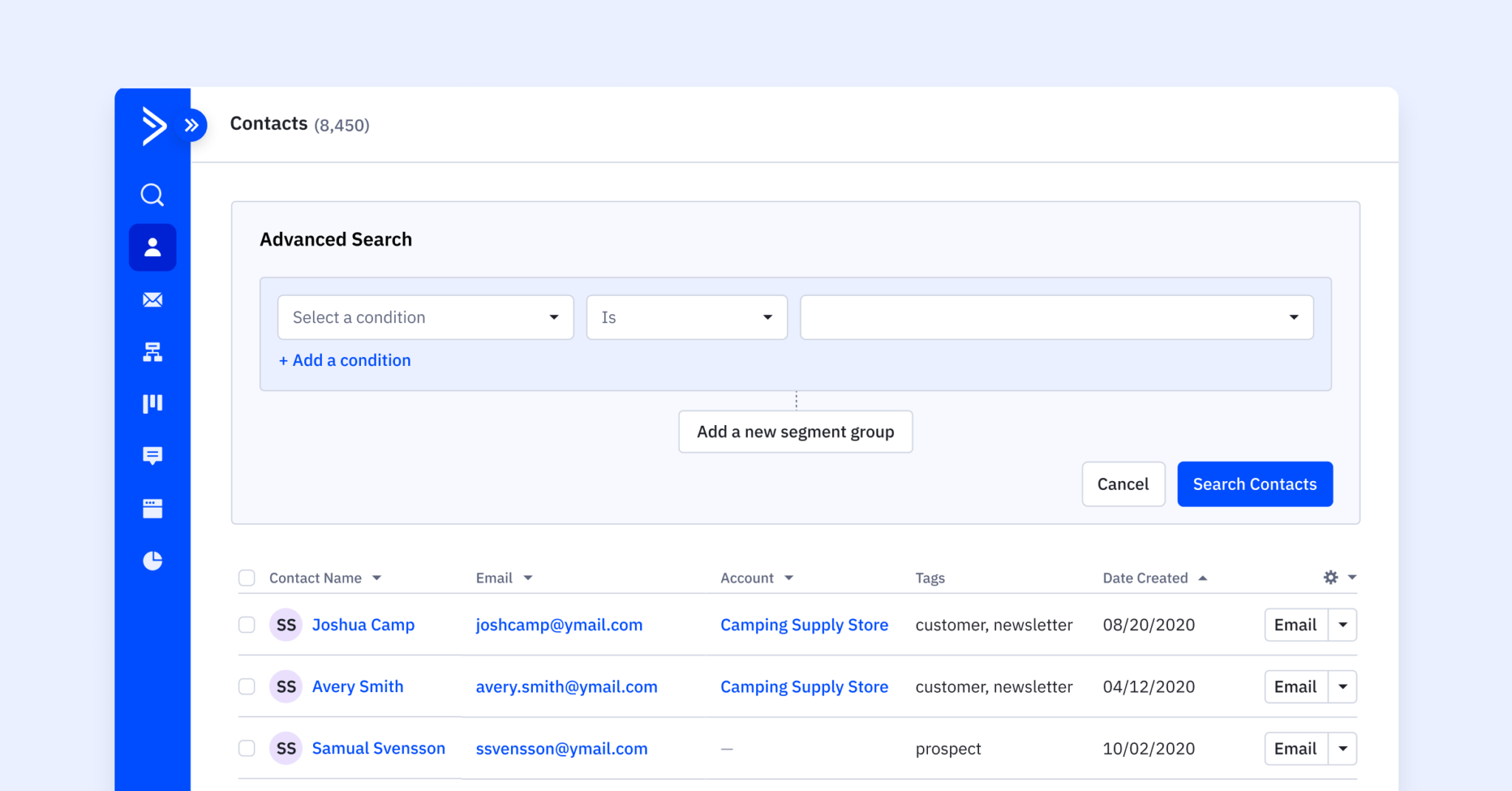

When comparing ActiveCampaign vs ConvertKit in terms of segmentation and targeting options, both platforms offer comprehensive tools. ActiveCampaign provides advanced, dynamic segmentation suitable for detailed targeting, while ConvertKit offers an intuitive approach with powerful tagging and automation capabilities tailored for content creators. Both platforms ensure that you can effectively target your audience with personalized content, enhancing your email marketing efforts.
A/B Testing Capabilities
ActiveCampaign provides advanced A/B testing features that allow you to test various elements of your emails, such as subject lines, content, and send times. Users can set up multiple tests within a single campaign, giving you comprehensive insights into what works best for your audience. ActiveCampaign also offers detailed reporting on your A/B tests, making it easy to analyze results and make data-driven decisions to improve future campaigns.
ConvertKit offers more straightforward A/B testing tools, focusing primarily on subject-line testing. Users can easily set up tests to compare different subject lines and track which one has a higher open rate. While ConvertKit’s A/B testing capabilities are not as extensive, they are easy to use and integrate seamlessly into the campaign creation process. This simplicity ensures that even those new to A/B testing can implement and analyze tests effectively.


When comparing ActiveCampaign vs ConvertKit in terms of A/B testing capabilities, both platforms provide valuable tools, though ActiveCampaign offers more extensive options. ActiveCampaign’s ability to test various elements of your emails gives it an edge, while ConvertKit’s focus on subject line testing keeps the process simple and effective. Depending on your testing needs, either platform can help you optimize your email campaigns.
List Management
ActiveCampaign provides a comprehensive set of list management features. Users can create multiple lists and segment subscribers based on various criteria such as behavior, engagement, and demographic information. The platform also offers tools to clean your list by removing inactive subscribers and managing bounces and unsubscribes. ActiveCampaign’s tagging system allows for precise categorization of subscribers, making it easier to send targeted emails and maintain a well-organized list.
ConvertKit also excels in list management with a focus on simplicity and flexibility. Instead of multiple lists, ConvertKit uses a single list with tags and segments to organize subscribers. This approach helps prevent duplicate entries and ensures that your subscriber data is consolidated in one place. ConvertKit’s tagging and segmentation capabilities are robust, allowing users to manage their audience effectively and create highly targeted campaigns.
When comparing ActiveCampaign vs ConvertKit in terms of list management, both platforms offer excellent tools. ActiveCampaign provides a traditional approach with multiple lists and advanced cleaning tools, while ConvertKit’s single list with tags and segments offers a streamlined and efficient way to manage subscribers. Depending on your preference for list organization, either platform can help you maintain a healthy and well-organized subscriber list.
Pricing Plans and Value for Money
ActiveCampaign’s pricing starts at a slightly higher point compared to ConvertKit. However, it offers more advanced features even at the basic level. ActiveCampaign’s plans are tiered based on the number of contacts and the level of functionality, making it a flexible option for growing businesses. Additionally, it offers a 14-day free trial to test out its features before committing.
ConvertKit positions itself as a premium option, particularly for creators and bloggers. It does not offer a free plan but provides a 14-day free trial for new users to test its features. ConvertKit’s pricing starts at $29 per month for up to 1,000 subscribers, which includes all features with no limitations on email sends. The pricing increases with the number of subscribers, but the value lies in its advanced automation and segmentation capabilities.
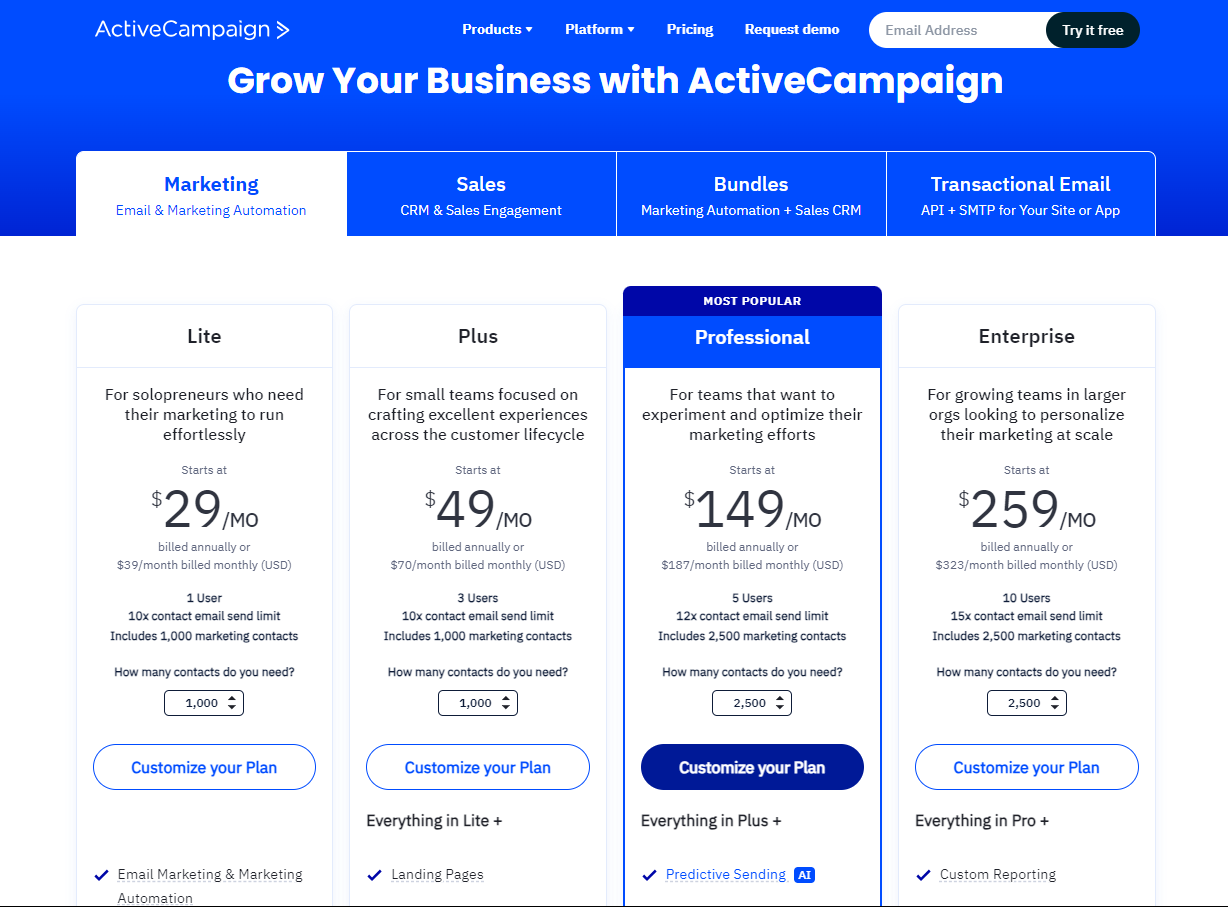

When comparing ActiveCampaign vs ConvertKit in terms of pricing plans and value for money, both platforms provide good value. ActiveCampaign offers more advanced features at a higher price, while ConvertKit provides a more budget-friendly option with a focus on creators. Ultimately, the best choice depends on your specific needs and budget constraints.
User Reviews and Reputation
ActiveCampaign is highly praised for its advanced automation capabilities and robust CRM integration. Users appreciate the platform’s ability to create complex workflows and the depth of its segmentation options. However, some users mention that the initial learning curve can be steep due to the abundance of features. Overall, ActiveCampaign is well-regarded for its powerful tools and flexibility.
ConvertKit, on the other hand, is well-regarded among content creators, bloggers, and small business owners. Users appreciate its powerful automation capabilities and intuitive tagging system, which make it easy to manage subscribers and create personalized campaigns. ConvertKit’s focus on simplicity and effectiveness is frequently mentioned in reviews. While some users note that the platform can be pricier than others, the consensus is that the value provided justifies the cost.
When comparing ActiveCampaign vs ConvertKit in terms of user reviews and reputation, both platforms are highly regarded but cater to different audiences. ActiveCampaign is favored for its advanced automation and CRM capabilities, while ConvertKit is appreciated for its simplicity and accessibility. Depending on your specific needs and budget, either platform can be a strong choice for your email marketing efforts.
